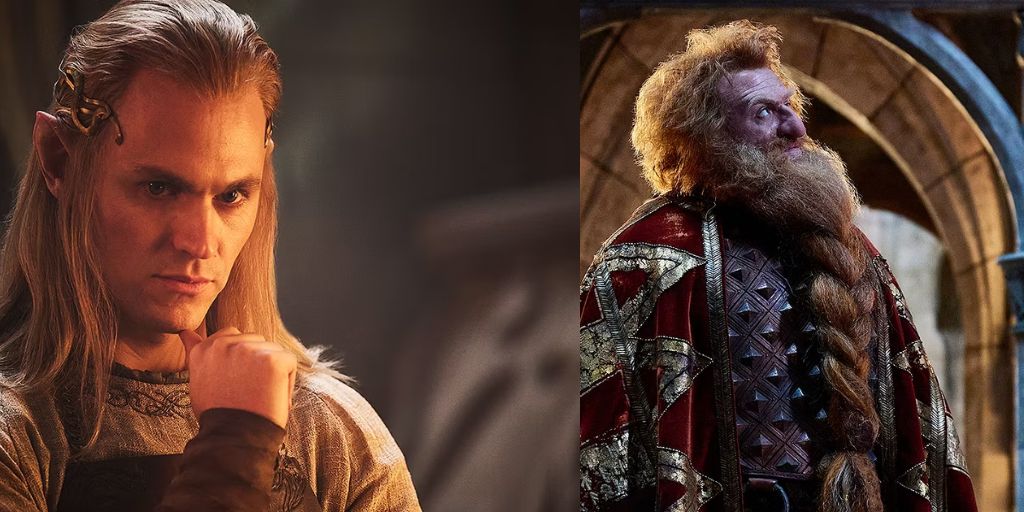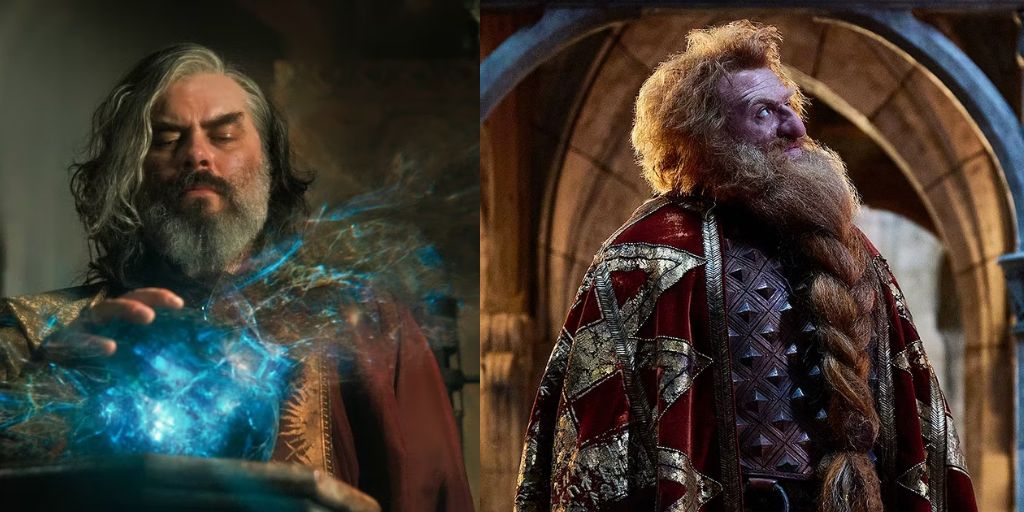Tom Bombadil (Rory Kinnear) appears in the newest episode of The Lord of the Rings: The Rings of Power titled “Eldest.”
Many viewers might be surprised to meet one of the most powerful characters not featured in previous adaptations by Ralph Bakshi or Peter Jackson.
Tom Bombadil’s abilities are not fully explained, but the limited powers he does show in J. R. R. Tolkien’s writings suggest that he can do things other great beings in Middle-earth cannot.
Despite his great strength, Bombadil is not a “Deus-ex-Machina” (a term often incorrectly used for the eagles).
He is powerful but cannot defeat Sauron by himself, which is why he tells The Stranger (Daniel Weyman) that it is his duty, similar to how he tells Frodo in the books.
Tom Bombadil Is Unaffected by the One Ring
In The Lord of the Rings: The Fellowship of the Ring, Frodo and the hobbits—Merry, Pippin, and Sam—meet Tom when he rescues them from Old Man Willow, a tree with a nasty spirit that tries to eat the hobbits. Tom shows his ability to disappear at will and talk to trees, like he does with Old Man Willow.
When Frodo offers him the One Ring, Bombadil reacts in a way never seen before. Tom takes the Ring, sees it as unimportant, puts it on, and remains visible before making it disappear and then reappearing to Frodo.
Tom not only gives up the Ring without any trouble, but being a ‘ring-bearer’ does not seem to affect him. Even when Frodo makes himself invisible with the Ring to check if it works, Tom can still see him. Until this point and afterwards, every character who encounters the Ring is either afraid or tempted by it.
To see Bombadil treat it so lightly is surprising. His ability to see Frodo in the Unseen World might hint that he has a similar origin to the Valar and Maiar, though his true origin remains a mystery.
In Rings of Power, Tom is shown to be very powerful, saving The Stranger from Old Man Ironwood and appearing much older than he looks. The big question is: “Why doesn’t Tom take the Ring to Mordor himself?”
Why Doesn’t Tom Bombadil Take on Sauron Himself?
The answer to this question is found in The Fellowship of the Ring. It is similar to Tom’s response to The Stranger in the episode: “Tom’s a wanderer, not a warrior.” As shown in Rings of Power, Tom was in Middle-earth before the trees, acorns, and even calls stars “newcomers.”

This suggests that Tom is not originally from this world. This explains why the Ring does not tempt him and why he cannot intervene in the world’s struggles. His power seems to come from a different source, making him unaffected by Sauron’s power yet unable to counteract it.
The Council of Elrond in The Fellowship of the Ring discusses hiding the Ring in Bombadil’s realm. However, it is decided that even Bombadil could not protect against all of Sauron’s forces. This highlights that even the most powerful beings cannot defeat evil alone.
It requires everyone in Middle-earth working together. Tom is not from Middle-earth; he represents something else. In a letter from 1937, J.R.R. Tolkien told Stanley Unwin that Bombadil represents the English countryside. This makes Bombadil a figure to protect rather than a warrior.
Tom Bombadil’s brief appearance in “Eldest” shows him to be one of the most powerful characters ever adapted in The Lord of the Rings franchise.
He is not affected by the Ring and his age and ability to see into the Unseen World suggest ancient, mythical origins. However, as a symbol of the English countryside, Tom cannot fight wars for others. He is a wanderer, not a warrior, and that’s exactly how he should remain.
The Lord of the Rings: The Rings of Power is available to stream on Prime Video.




